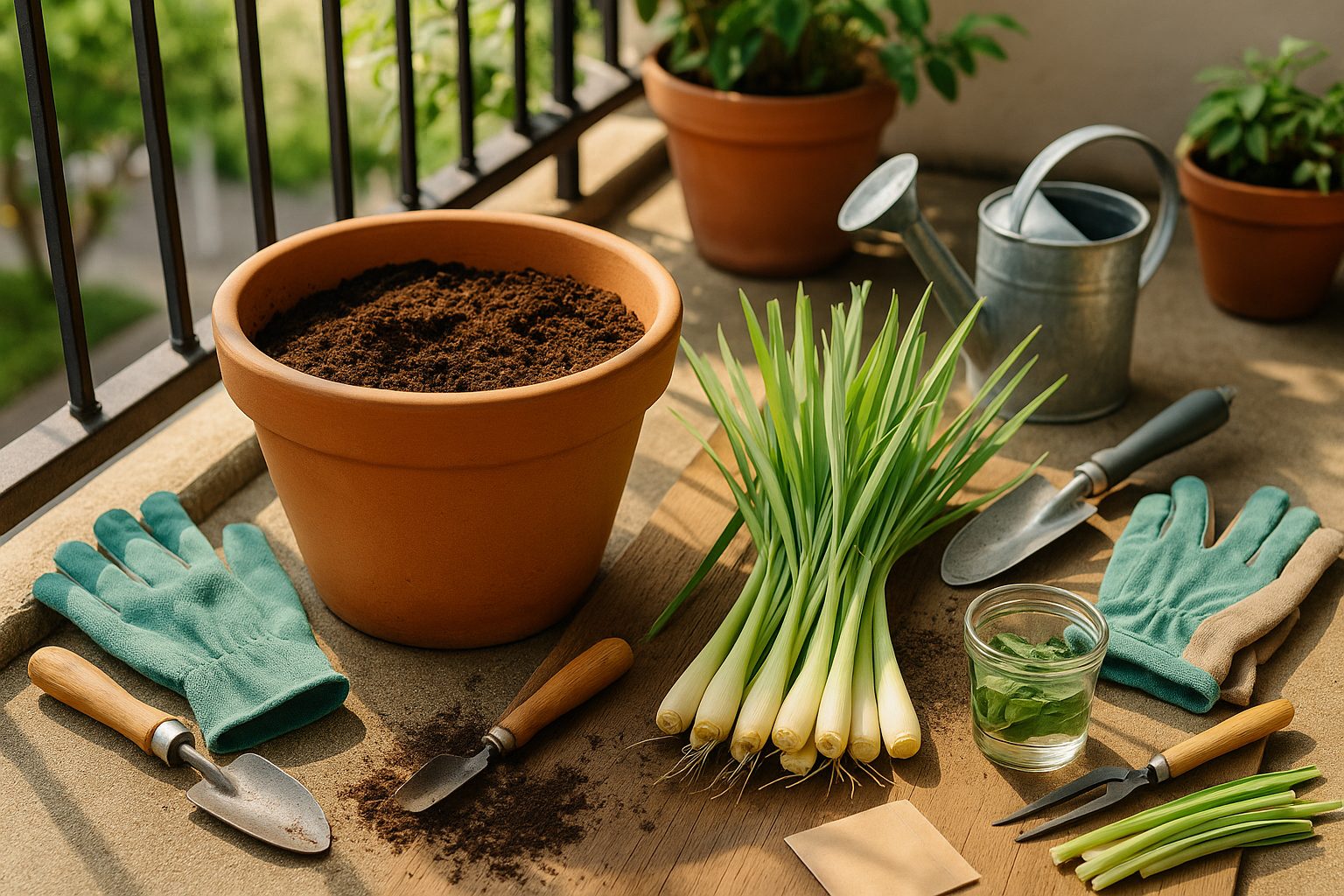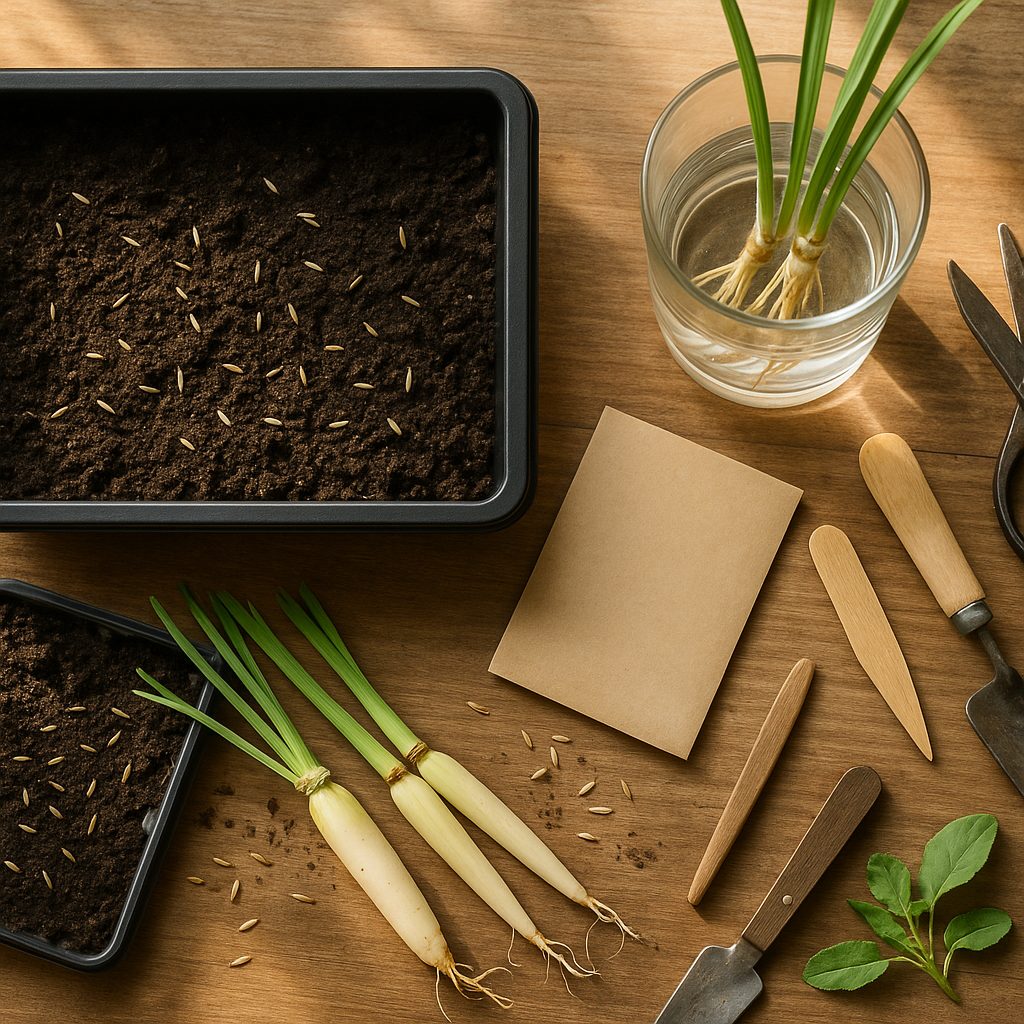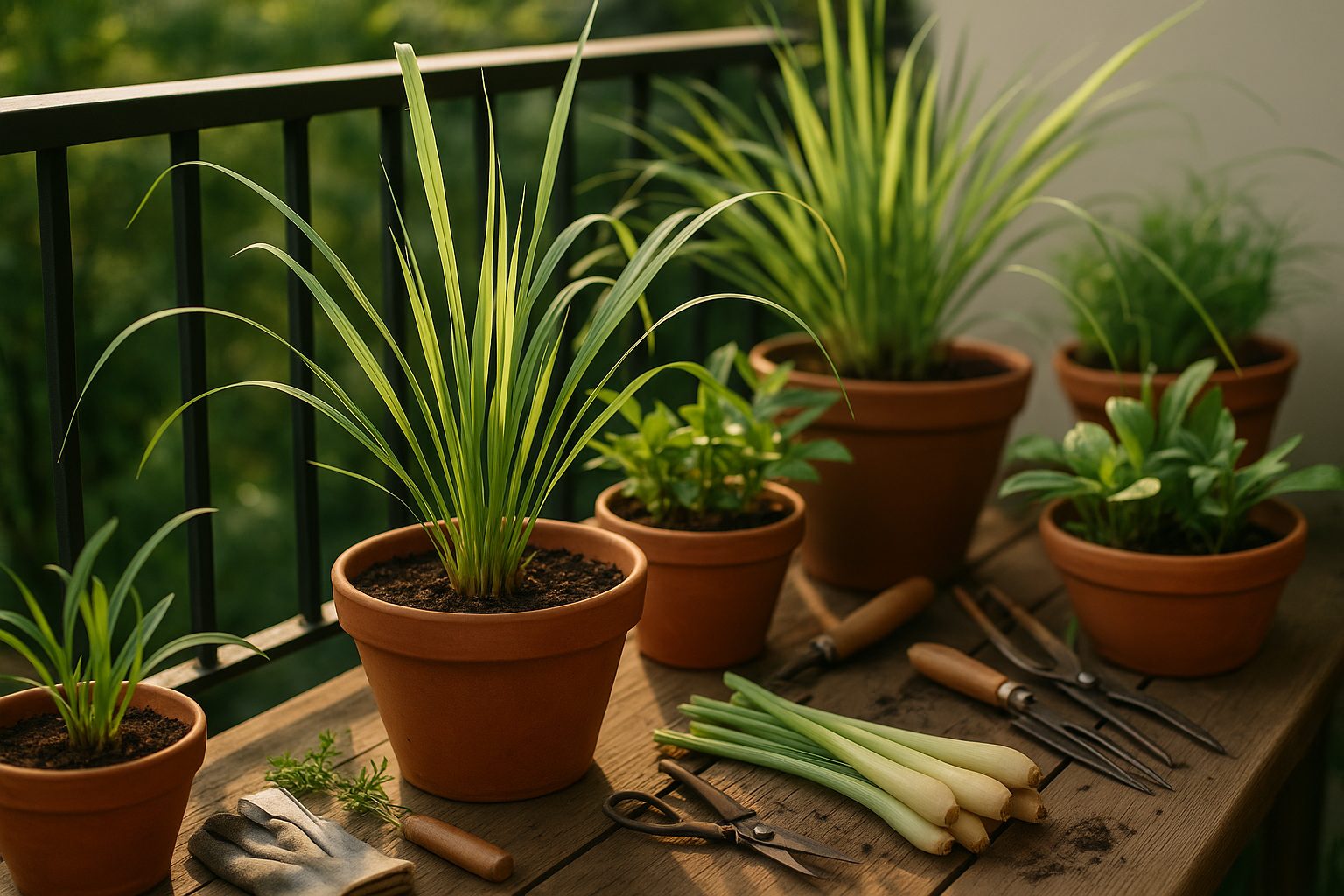Getting Started With Growing Lemongrass

If you’ve ever wondered whether you can successfully grow lemongrass on balcony spaces or small patios, you’re not alone. Lemongrass is a fragrant herb beloved for its citrusy flavor, making it a staple in cooking—from Thai curries to soothing herbal teas. Its tall, graceful stalks are also popular for natural pest control and even homemade beauty products. Because of its versatility and ease of use, lemongrass has quickly become a go-to choice for home gardeners seeking both beauty and function in compact spaces.
Lemongrass thrives in warm, sunny environments and loves humidity, making it perfect for those with sunny balconies or patios during warmer months. While it is most at home outdoors in USDA zones 9 and above, you can easily bring potted lemongrass indoors during colder seasons. This flexibility is a major reason why it’s so popular among urban gardeners and those with limited space.
Getting started with growing lemongrass on balcony setups is surprisingly simple. All you need are a large pot with good drainage, high-quality potting soil, and either lemongrass stalks bought from a grocery store or young plants from a nursery. Regular watering, a sunny spot (at least 6 hours of sunlight per day), and some liquid fertilizer every few weeks will get you off to a great start. If you have garden gloves, a trowel, and pruning shears, those will come in handy too, especially when it’s time to harvest. With just these essentials, you’ll soon enjoy fresh lemongrass grown right outside your door.
Choosing, Sowing, and Planting Lemongrass

When starting your lemongrass patch, selecting healthy planting material is key. If you’re using seeds, pick fresh, high-quality ones from a trusted supplier—older seeds may have poor germination rates. More commonly, gardeners begin with starter stalks, which you can find at nurseries or even in the produce section of larger grocery stores. Look for firm, green stalks with intact bases and no signs of mold or excessive dryness.
To plant seeds, fill a seed tray or small pots with a moist, well-draining potting mix and surface-sow the seeds, pressing them in lightly—lemongrass seeds need light to germinate. Keep them warm (above 70°F/21°C) and consistently moist; expect germination in about two to three weeks.
For stalks, trim off the leaves to about six inches above the base and remove any loose outer layers. Place the stalks in a glass of water and set them on a sunny windowsill until roots develop—this takes one to two weeks. Then transplant them outdoors once frost danger has passed.
Lemongrass thrives in full sun and needs at least six to eight hours of direct sunlight daily. Choose a spot with rich, loamy soil and excellent drainage; amend heavy clay or sandy soil with compost for best results. Dig planting holes or furrows about 12–18 inches apart, and lightly loosen the soil around each spot to encourage root spread. Water the area well before planting to reduce transplant shock.
For continued success, plant after all risk of frost has ended, usually in late spring, when the soil is warm and daytime temperatures are reliably above 60°F (16°C). With the right start and site prep, your lemongrass will quickly establish healthy roots and supply you with fragrant stalks all season long.
Caring for Your Lemongrass Plant
Keeping your lemongrass happy starts with a smart watering routine: during the growing season, aim to keep the soil consistently moist but not soggy, watering whenever the top inch feels dry. In hot climates or peak summer, you might need to water nearly every other day, while cooler seasons call for less frequent checks.
Fertilizer can boost healthy, fragrant stalks—a balanced liquid feed every few weeks works great, or you can opt for an all-purpose slow-release granule at planting, refreshing it each season.
To lock in soil moisture and cut down on weeds, an inch or two of straw, shredded bark, or compost mulch is a practical addition around the base of the plant; just keep the mulch slightly away from the stems to prevent rot.
Lemongrass flourishes in full sun (at least 6 hours a day) but adapts well to containers. If you’re growing indoors, position your pot near a bright window or supplement with a grow light. Be mindful that soil in pots dries out faster than in the ground, requiring a bit more attention.
Watch for common pests like aphids or spider mites—these can usually be managed with occasional rinsing or neem oil sprays. Good airflow and well-drained soil will prevent most fungal diseases, but always remove dead leaves and avoid overcrowding to keep your plant robust.
Regularly monitoring for yellowing stalks or stunted growth helps you catch issues early, ensuring your lemongrass thrives season after season.
Pruning, Training, and Ongoing Maintenance
A key aspect of creating lush, healthy plants is regular pruning and training. For fuller growth, start by snipping off dead or damaged branches and cutting back leggy stems—this encourages the plant to branch out and become bushier.
Gardeners often use the “pinch and prune” method with houseplants and outdoor shrubs: simply pinch off the growing tips every few weeks to promote more side shoots. When plants become overcrowded or too large for their space, it’s time to divide or thin them.
For perennials, dig up the clump in early spring or fall, gently separate the roots, and replant sections a few inches apart. Thinning out vegetable seedlings works similarly—snip extra sprouts at the soil line so the strongest ones have room to thrive.
Consistent maintenance also means spotting trouble early. Check regularly for yellowing leaves (often a sign of overwatering or nutrient deficiency), brown tips (sometimes due to low humidity or salt buildup), and any evidence of pests like sticky residue from aphids or small holes in leaves.
If you notice these symptoms, act quickly: remove affected foliage, adjust your watering schedule, and consider a gentle insecticidal soap for pests. These simple, ongoing habits ensure your plants stay vibrant and resilient all season long.
Harvesting and Using Lemongrass
Knowing when to harvest lemongrass is key to enjoying its vibrant flavor and aroma. Look for stalks that are at least a half-inch thick and over a foot tall—these are mature and packed with essential oils.
To harvest, use a sharp, clean knife or gardening shears to cut the stalks near ground level, taking care not to damage the growing clump; always wear gloves to avoid the sharp leaf edges. After cutting, trim the tougher tops and outer leaves, keeping the tender inner stalk for cooking and the greens for teas or infusions.
Fresh lemongrass stalks will last up to two weeks in the fridge if stored in a plastic bag or wrapped in a damp paper towel. For longer storage, freeze whole stalks in airtight containers. The leafy tops dry well and make a fragrant addition to homemade sachets or potpourri.
In the kitchen, lemongrass shines in curries, soups, marinades, and even desserts. Smash the stalk with the back of a knife to release its citrusy notes before cooking.
Beyond the kitchen, try simmering lemongrass leaves in water for a natural room spray, or add them to bathwater for a relaxing soak. With a little care, your lemongrass harvest can elevate both your meals and your home with its fresh, zesty scent.
Lemongrass Companions and Common Problems
Companion planting with lemongrass offers both protective and practical benefits for your garden. Lemongrass naturally repels pests like mosquitoes, aphids, and whiteflies due to its strong citrus scent, making it a smart neighbor for vegetables and flowers prone to insect problems.
Compatible plants include tomatoes, peppers, beans, cabbage, and broccoli—these crops benefit from the pest-repelling powers of lemongrass and often enjoy similar growing conditions, such as plenty of sun and well-drained soil. Herbs like basil and mint can also share space with lemongrass, though it’s wise to keep them in separate containers if you want to control spreading.
Avoid planting lemongrass too close to root crops like onions, garlic, and carrots, as its dense root system can compete for nutrients. Incompatible pairings can stunt growth or reduce yields.
Lemongrass itself is fairly sturdy, but it can suffer from issues like rust (a fungal disease), root rot, and attacks from spider mites or mealybugs. For organic management, thin your plants to promote airflow and water at the base to discourage fungal diseases. If you spot pests, a gentle spray of diluted neem oil or insecticidal soap can help control infestations without harming beneficial insects. Regularly remove any dead or diseased leaves to keep plants healthy.
With a little care and the right plant neighbors, lemongrass can be a powerful ally in your garden’s ecosystem.
“`html
Tips for a Thriving Lemongrass Garden
Growing a thriving lemongrass garden starts with giving your plants the right conditions—full sunlight, well-draining soil, and consistent moisture are your best friends. Space each stalk about two feet apart to let them breathe and prevent crowding, which can invite pests and disease.
Mulch helps retain soil moisture and keeps weeds at bay, making your routine easier. As lemongrass thrives on regular trimming, don’t be afraid to harvest leaves often; it encourages new growth and keeps plants bushy.
If you notice brown tips or limp stalks, check soil drainage and adjust watering—too much or too little water are common culprits. Rotate your pots or beds occasionally to get even sun exposure, and keep an eye out for pests like aphids, which can be washed off with a gentle spray of water.
Every garden is unique, so don’t hesitate to experiment with planting locations or soil mixes until you find what works best. Keep a notebook to track what methods give you the healthiest stalks year to year.
For more in-depth guidance, reach out to local nurseries or join online gardening communities where you can ask questions and swap advice with fellow lemongrass lovers.
“`
